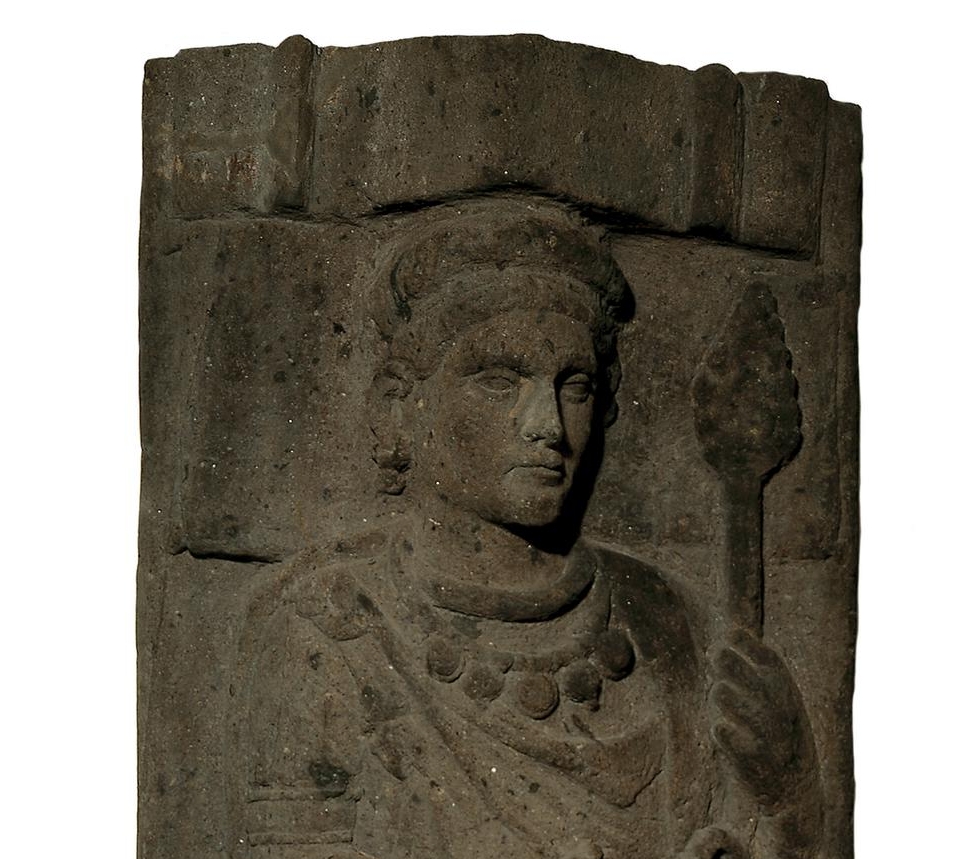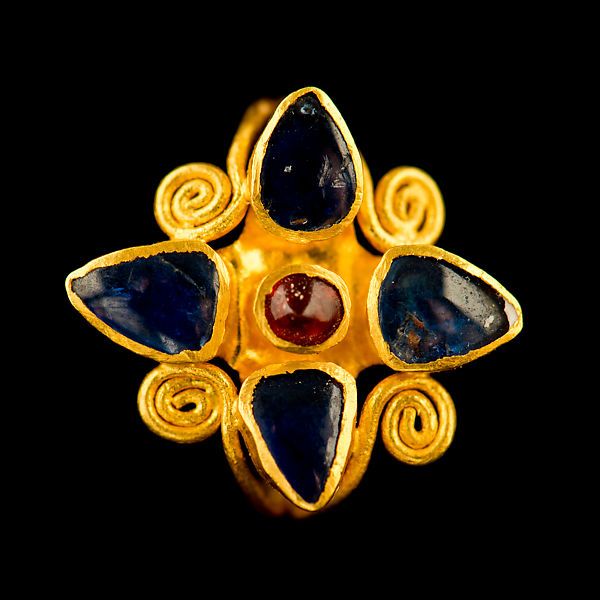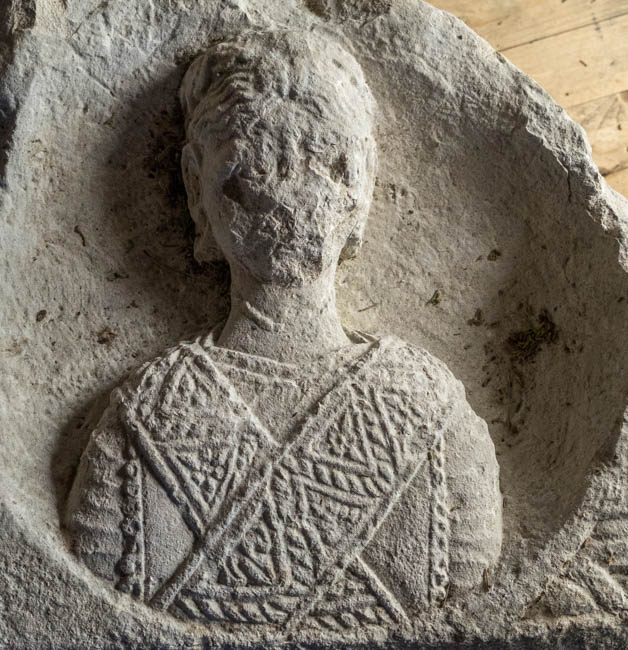
Sarcophagus of Adelphia, 4th C, Syracuse, Sicily

“From the Catacombs of St. John, Syracuse, Sicily
Case: 2nd quarter of the 4th century. Lid: Possibly later.
Marble, 69 cm. high, 85 cm. wide, 207 cm. long (case); 20 x 80 x 200 (cover).
Archeological Museum, Syracuse, Sicily
Two winged figures hold a framed inscription: HIC ADELFIA POSITA C F CONPAR BALERI COMITIS, “Here lies Adelphia C.F., spouse of Comes Valerius.” The “C. F.” abbreviation is for clarissima femina, an honorific for women in the foremost families of the Empire. The title Comes (plural comites) also designates a highly important member of the Imperial circle. Sgarlata (143-46) finds no comites in Sicily regularly using the name Valerius, and no identifiably Christian comites at all, until the end of the century.”
https://www.christianiconography.info/sicily/sarcAdelphia.html

https://commons.wikimedia.org
Sarcophagus of Stilicho, 380 CE, Milan, Italy (sometimes known as the sarcophagus of Stilicho)
Julia Hillner @WritingHelena

Jesus among the apostles. (Above) Round relief with the portraits of the deceased, and a scene with the Adoration of the Three Wise men. Detail from the front side of the so-called “Sarcofago di Stilicone” (“Stilicho‘s sarcophagus”), an Ancient Roman Christian sarcophagus dating from the 4th century. It is preserved beneath the pulpit of Sant’Ambrogio basilica in Milan, Italy.
The so-called “Sarcofago di Stilicone” (“Stilicho‘s sarcophagus”) is an Ancient Roman paleochristian sarcophagus dating from around 385 AD, sculpted for a high-rank military authority and his wife. It is preserved beneath the pulpit of Sant’Ambrogio basilica in Milan, Italy, in the same spot where it was originally placed (which makes it the only part of the paleochristian original basilica still in place).
https://commons.wikimedia.org
Sarcophagus, early 4th century
partly restored. Woman has a big necklace, that looks like three strings of beads.
in the Vatican Museums

Sarcophagus of the second quarter of the 4th century discovered in 1974, called the sarcophagus of the Trinity or of a spouses https://commons.wikimedia.org/wiki/File:Arles-Mus%C3%A9e-Sarcophage-La_trinit%C3%A9.jpg
String of beads and an interesting bracelet
Sarcophagus of the Trinity, 4th C, Arles
Musée de l’Arles antique, Arles, marble https://www.reddit.com/r/ArtefactPorn/comments/866emv/sarcophagus_of_the_trinity_roman_second_quarter/
“The sarcophagus was inviolate and contained the skeletons of the two deceased: a woman in her fifties about 1.52m tall and a man in his sixties about 1.80m tall with two major bone lesions on his left radius and forehead (probably war wounds in the army of Diocletian or Constantine), which had been healed and consolidated.
The lid is decorated with scenes from the New Testament with from left to right the young Hebrews before Nebuchadnezzar, the sacrifice of Abraham, Adam and Eve driven out of paradise, the delivery of the Law to Moses, and the offerings of Cain and Abel. The vat has a double register, the upper frieze of which is decorated in its centre by a shell medallion inside which is represented a couple of spouses. After a scene difficult to interpret, one finds from left to right the healing of the paralytic, that of the blind man and that of the Canaanite woman; finally the announcement of the denial of Peter with the cock at the foot of the apostle. The lower register begins with the worship of the Magi kings, followed by the Miraculous Source and the teaching of Peter.”

Sarcophagus, Catacombs of St Sebastian, Rome
ITALY – OCTOBER 02: Married couple in a shell and pastoral scene depicting a man milking sheep, detail from the relief on a marble sarcophagus, Catacombs of St Sebastian, Rome. Italy, 1st-4th century. (Photo by DeAgostini/Getty Images)

Sarcophagus, 4th C, Roman, an orant with a big necklace
In the SMB, museum record https://t.co/MQzEyuaCQw?amp=1
“The entire sarcophagus front was once divided into five niches by columns, which alternately carried arcades and gables. A wreath with fluttering ribbons hangs in each of the gussets. In the central arcade, designed as a shell niche, stands a veiled woman, probably the deceased. A three-row pearl necklace adorns her neck. She must have raised her arms in prayer. Next to her are two bearded men, perhaps apostles as advocates.”
“Im Artikel Sarkophag von 2019 stellt J. Dresken-Weiland den aktuellen Forschungsstand zum Thema zusammen” https://twitter.com/doelgerinstitut/status/1397539272715128834?s=20













